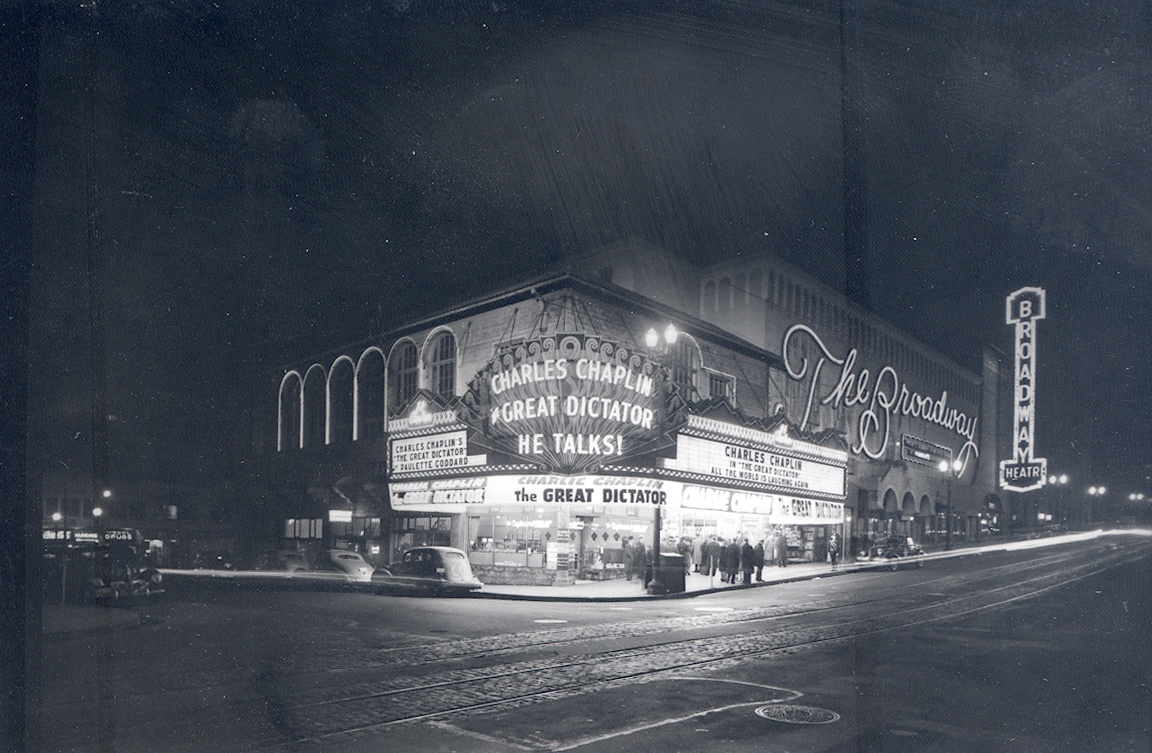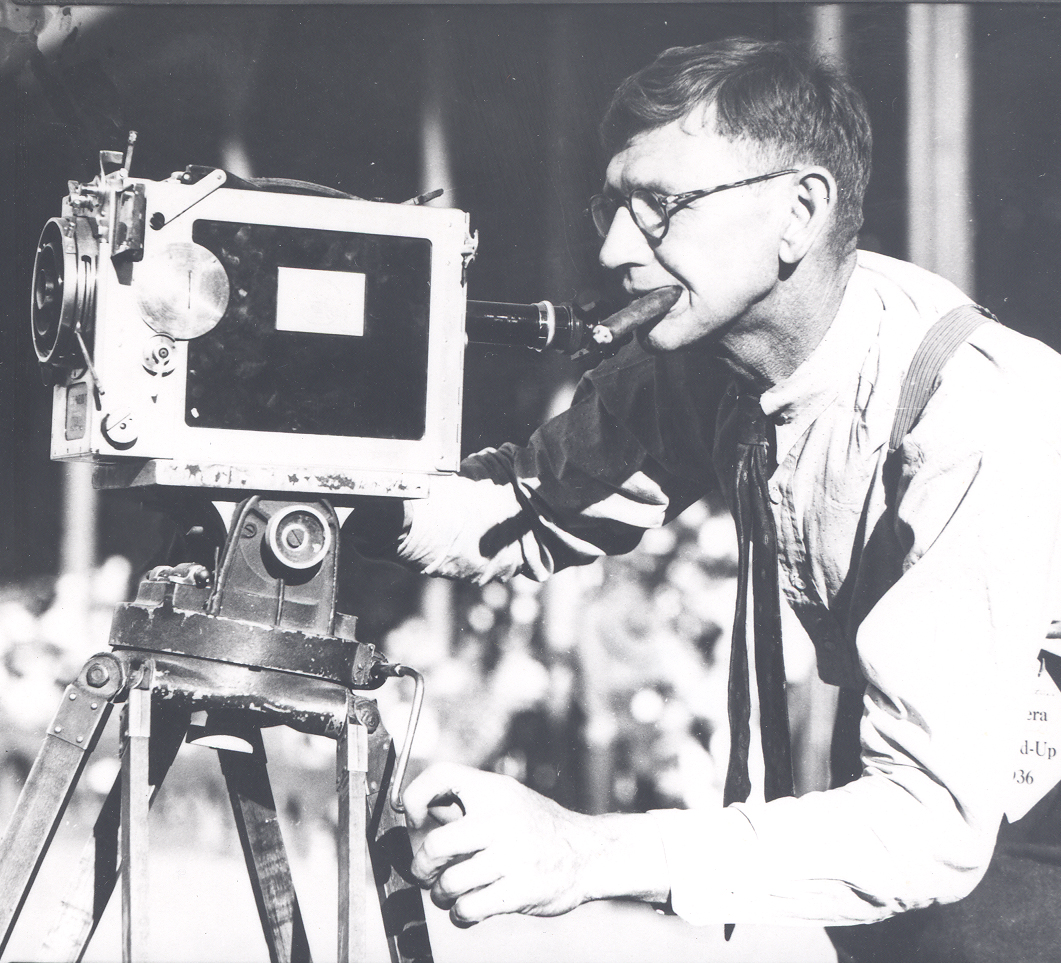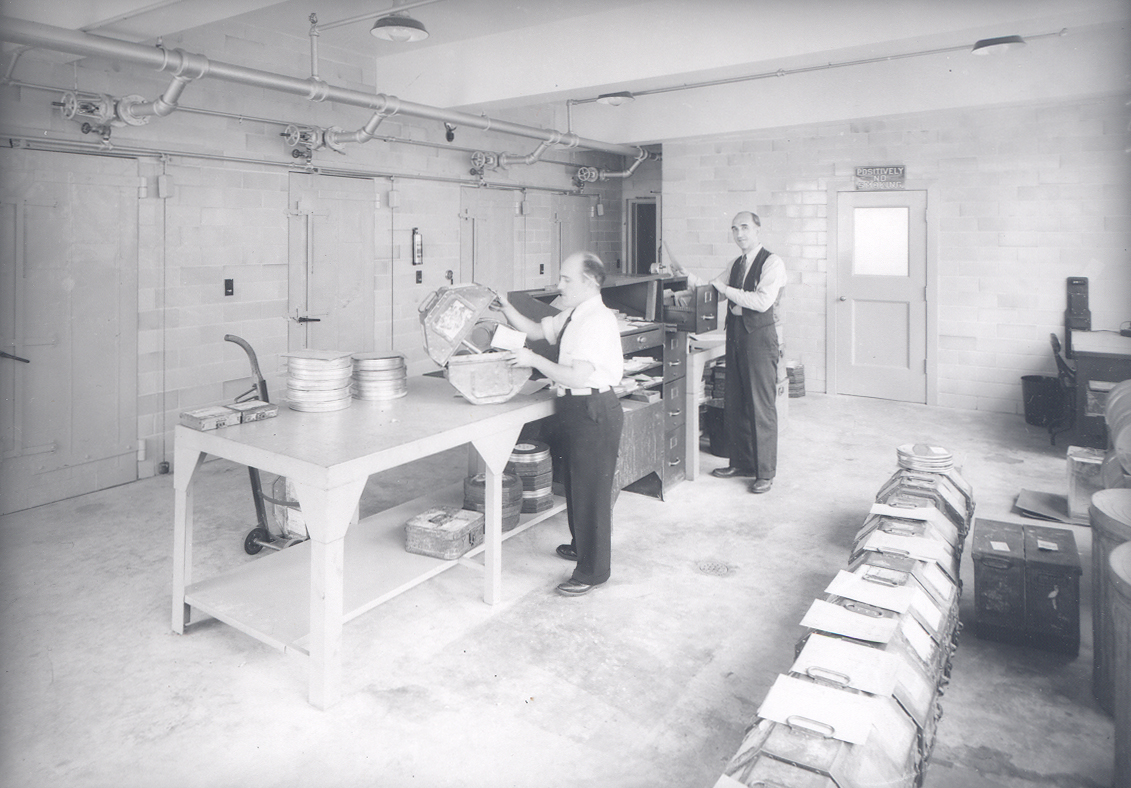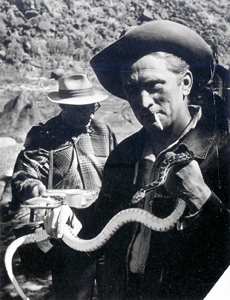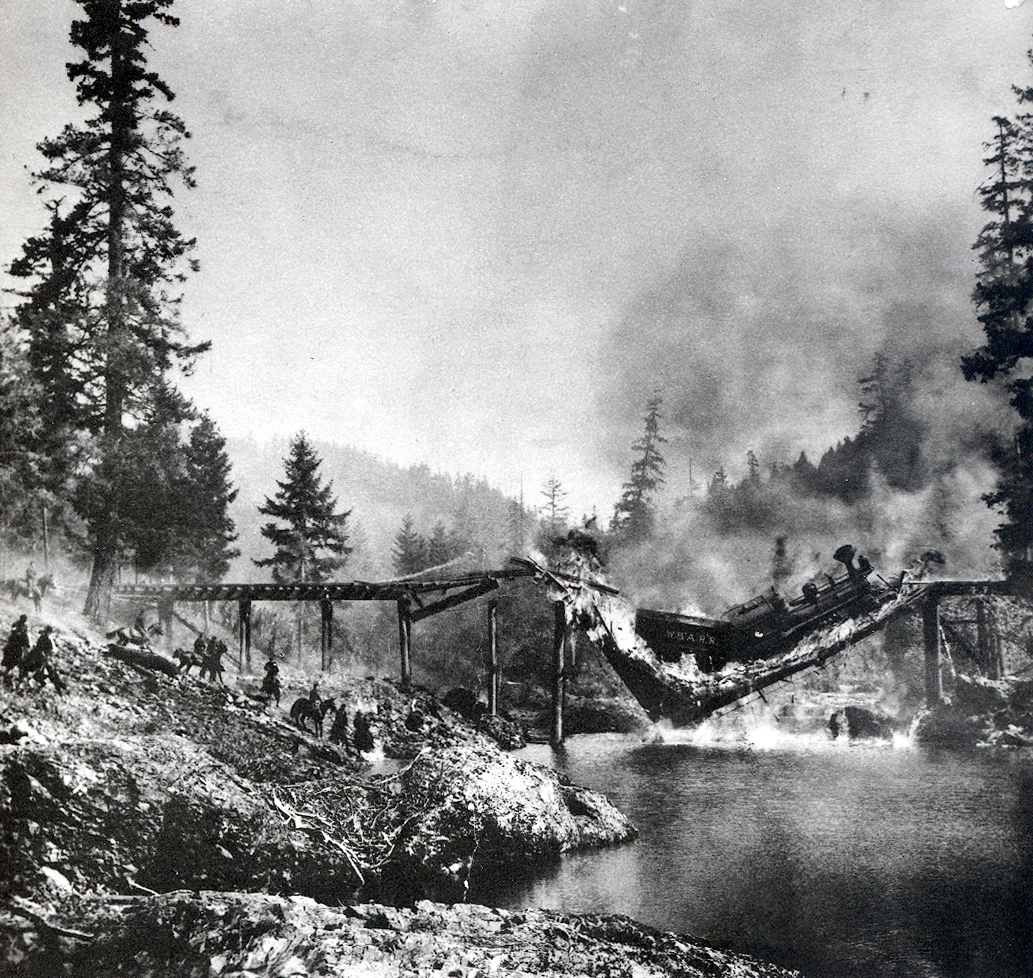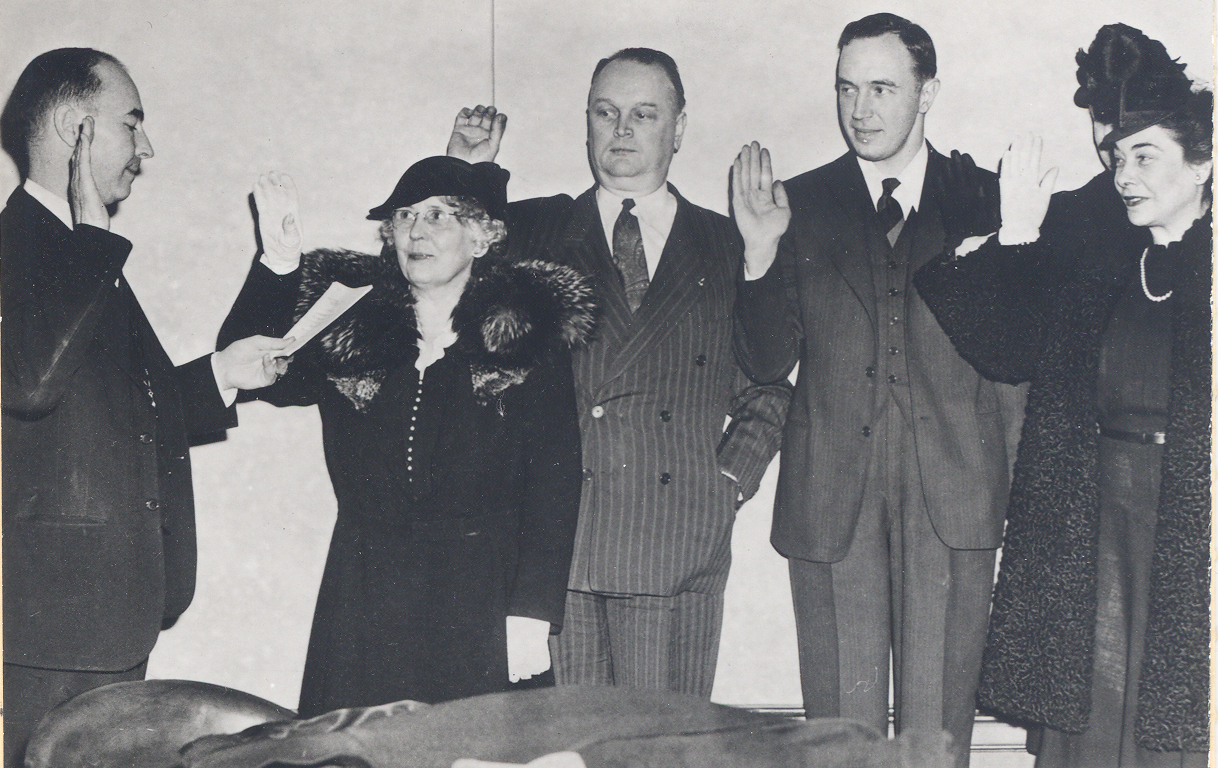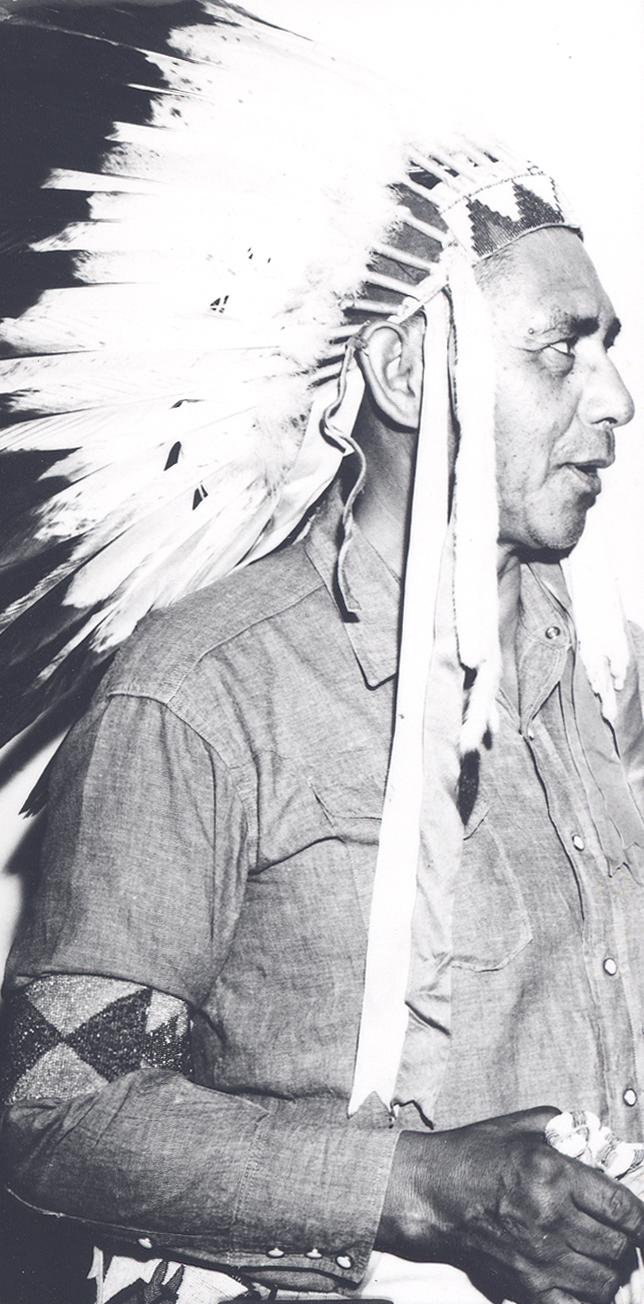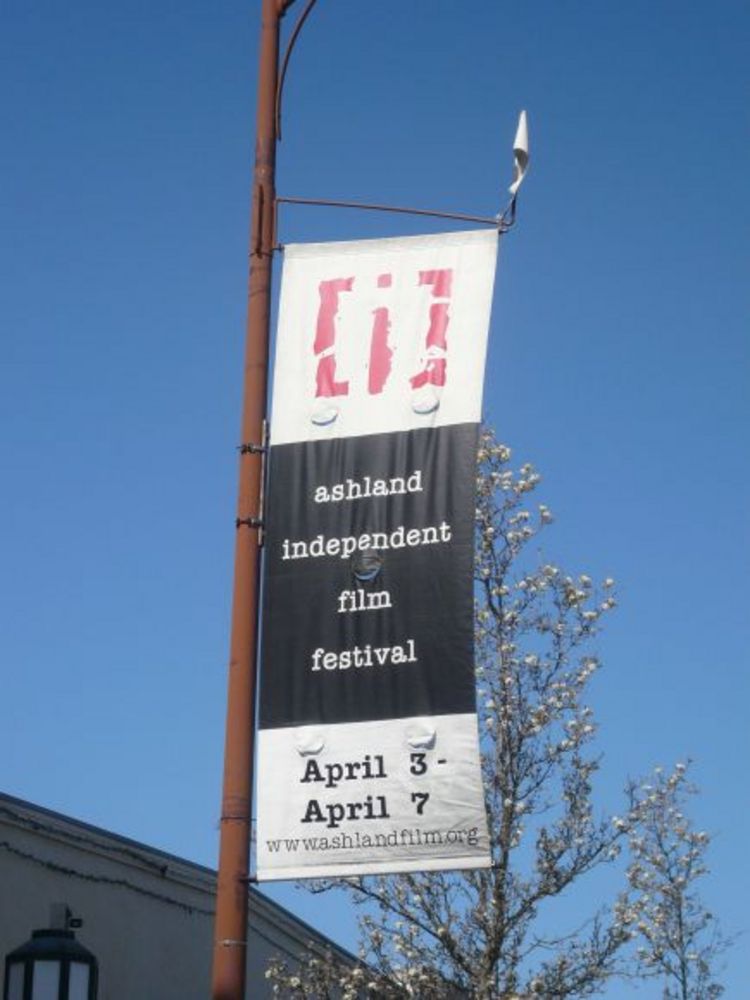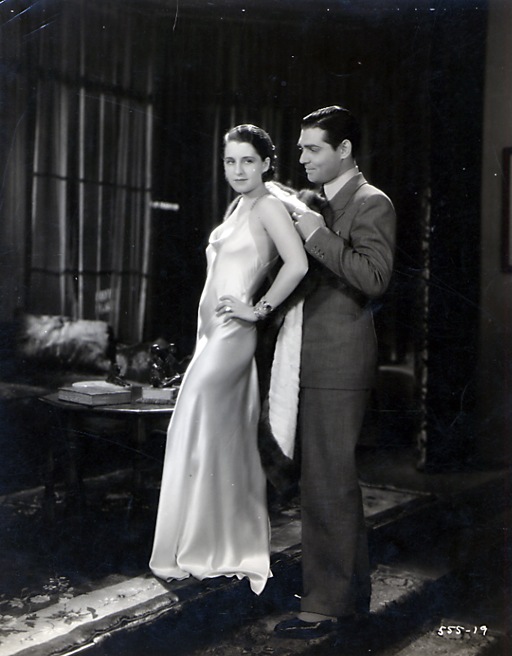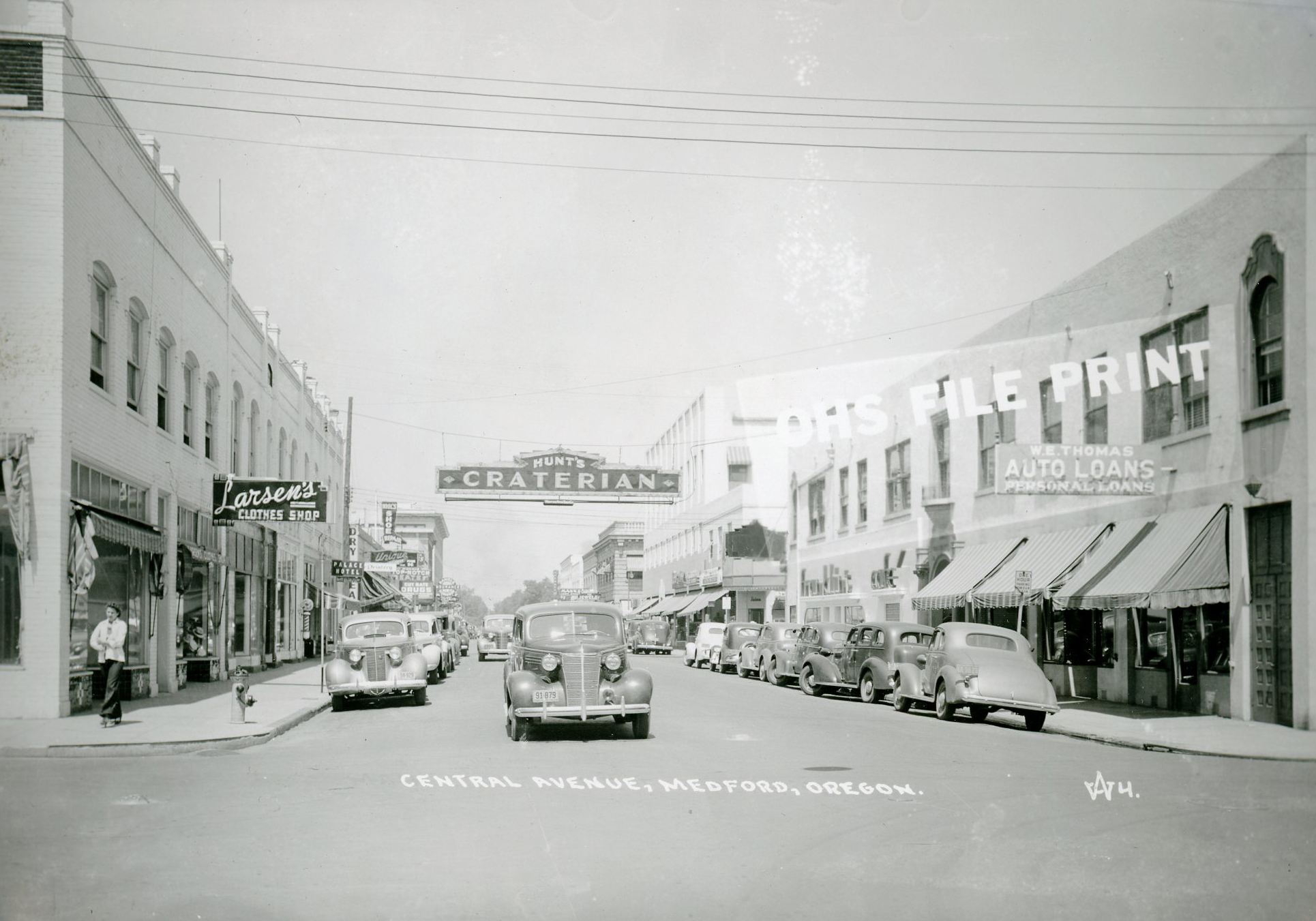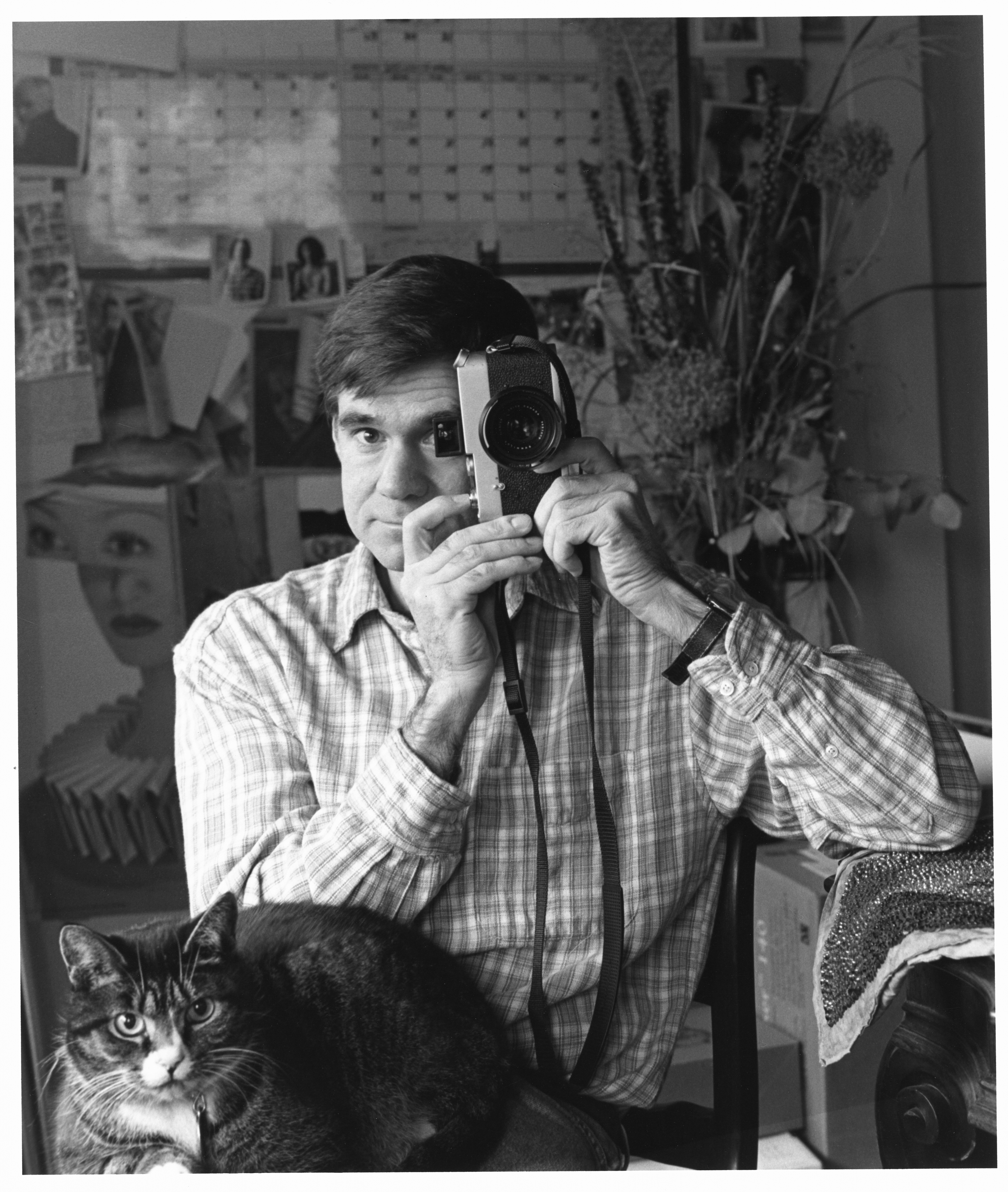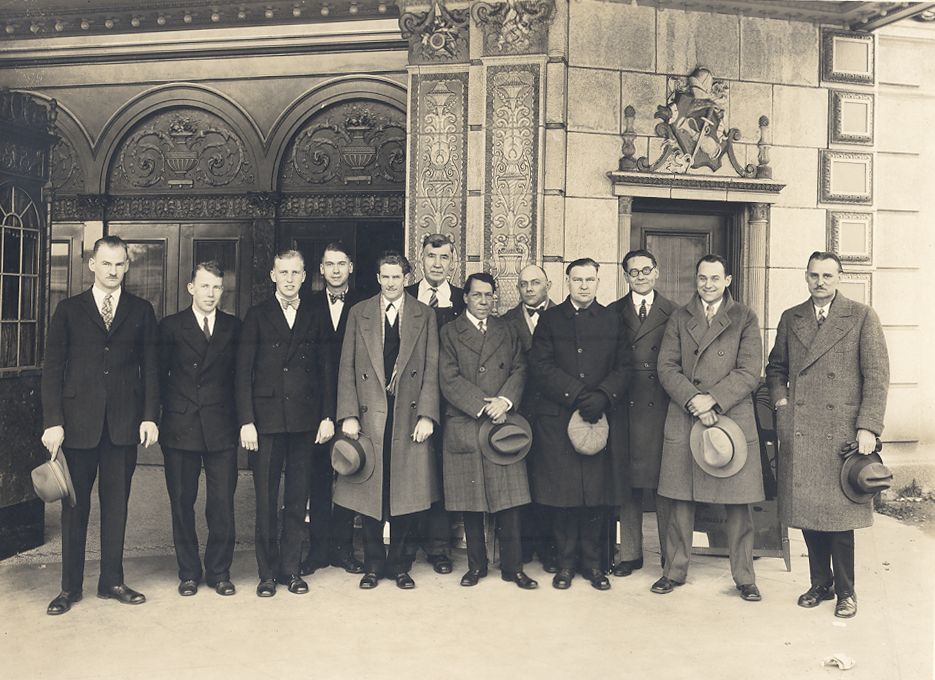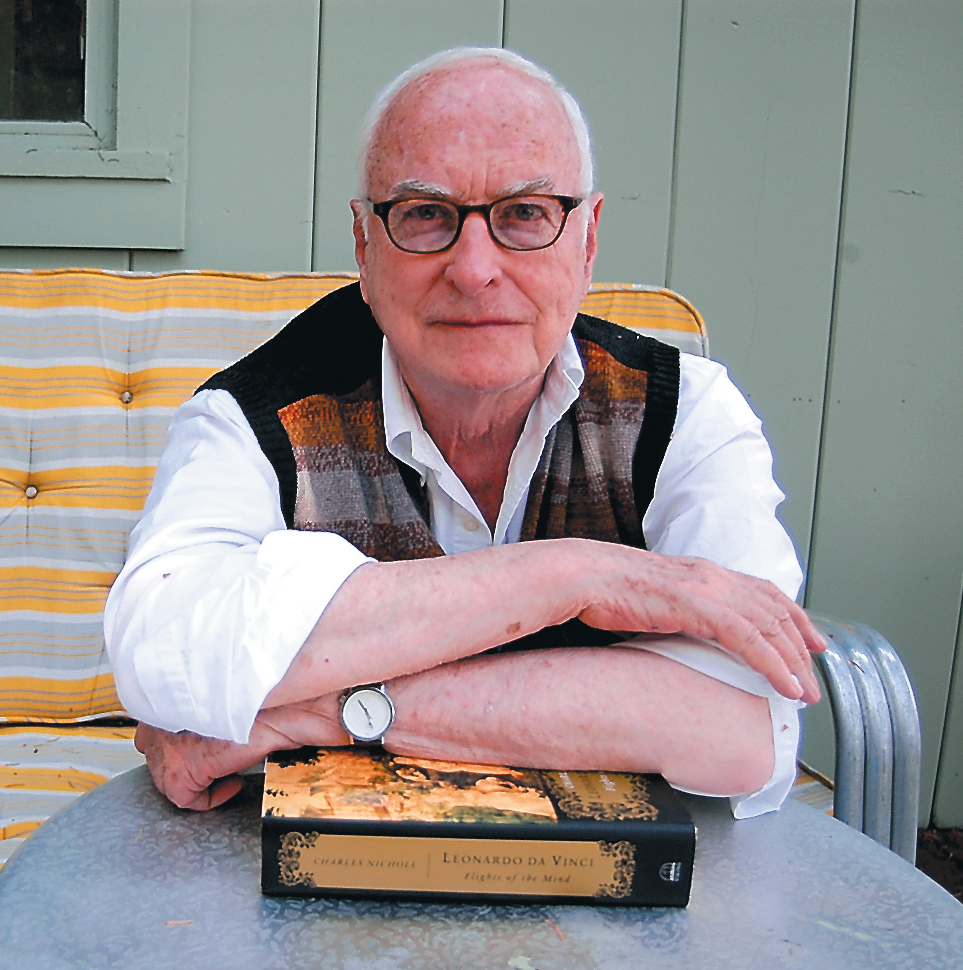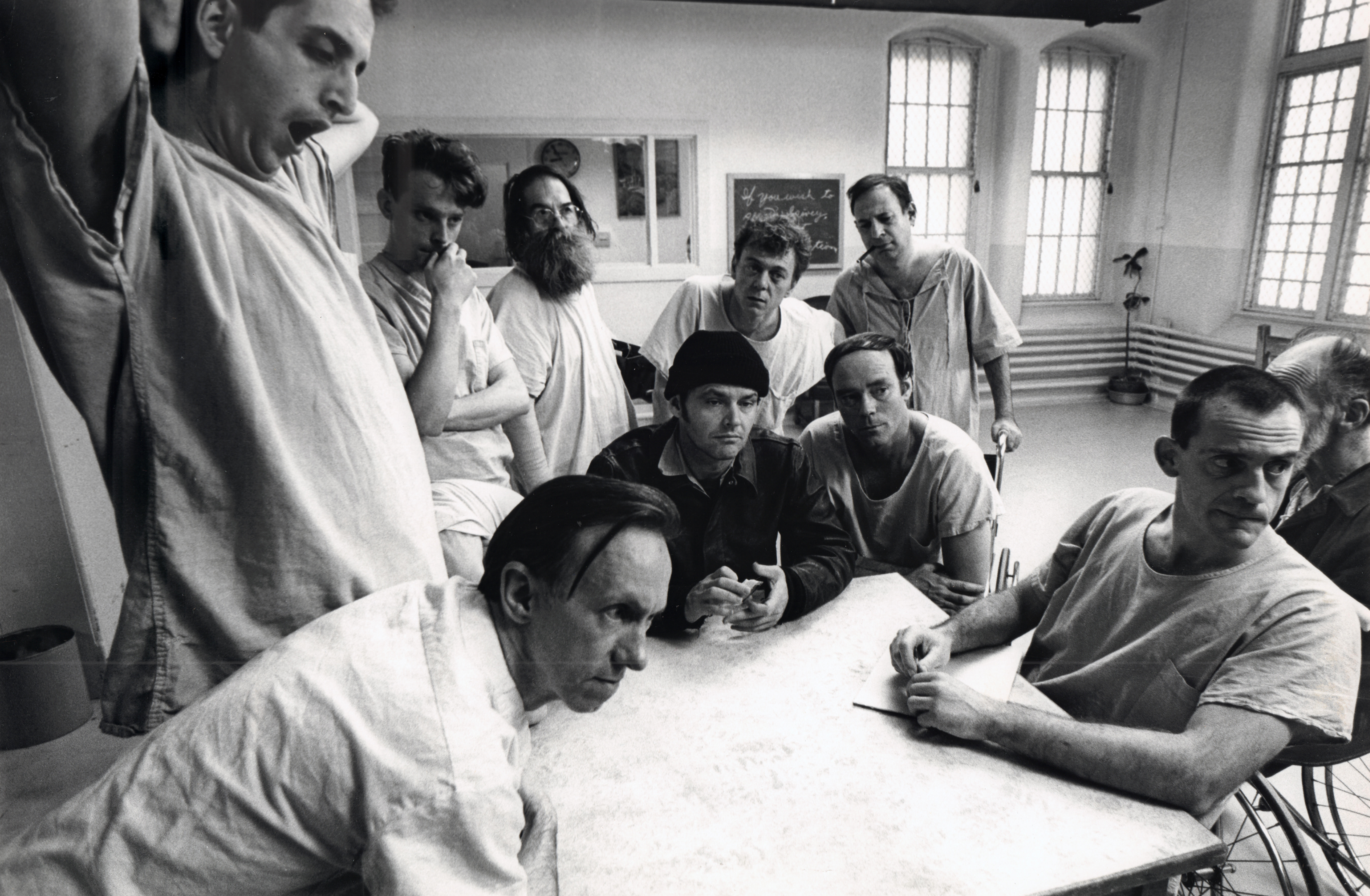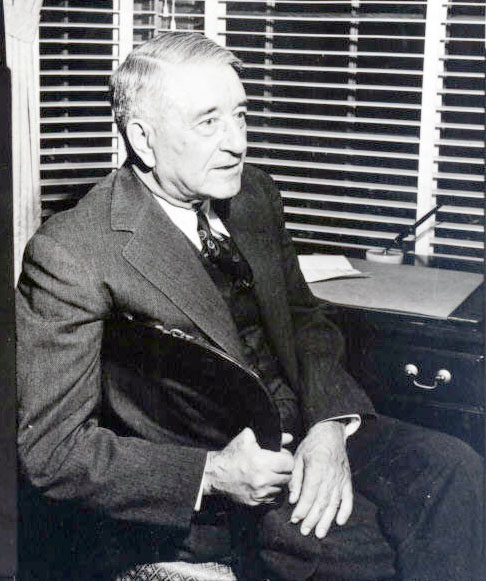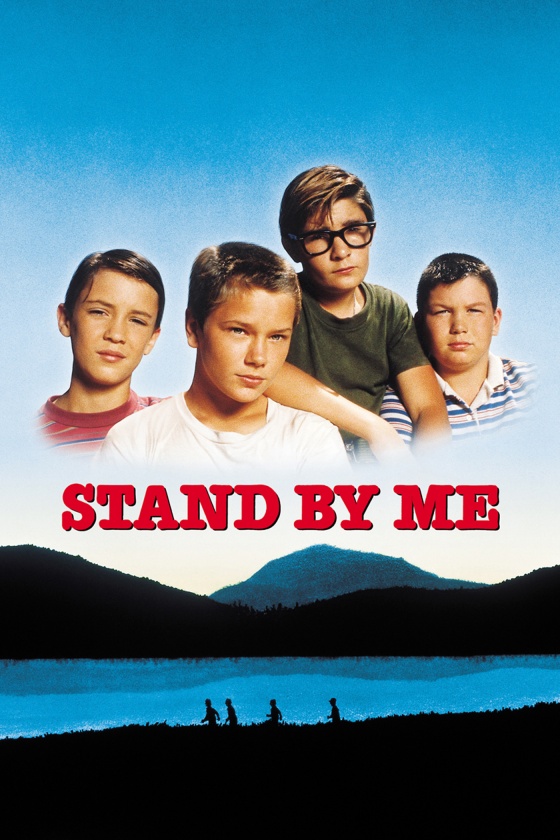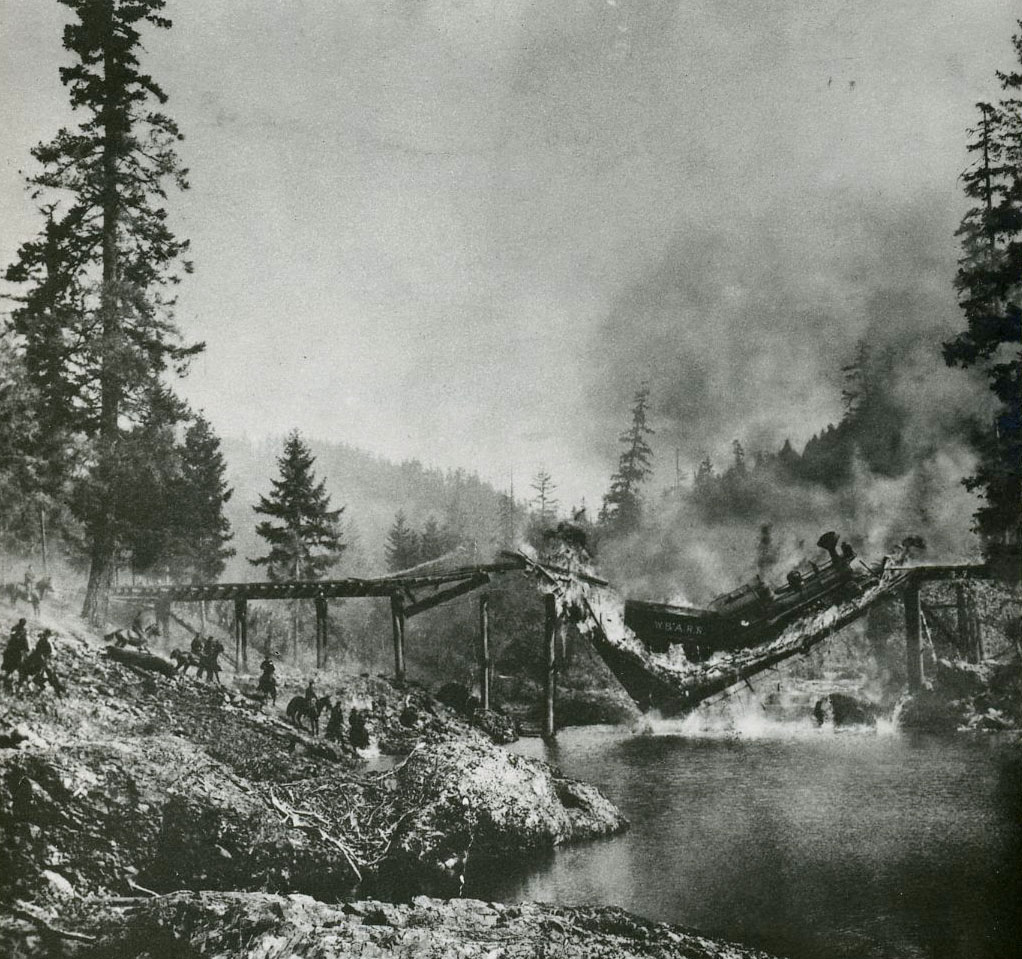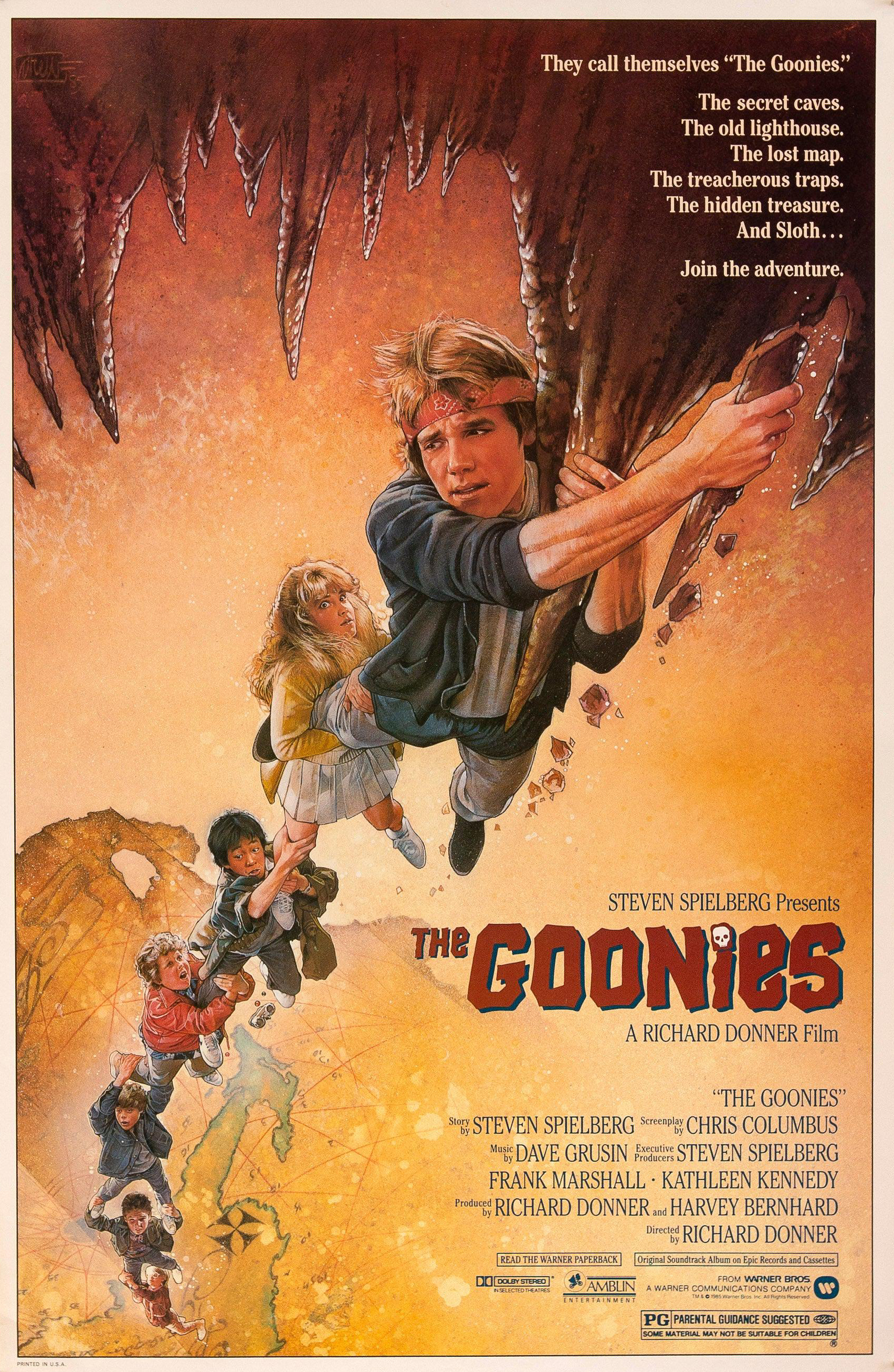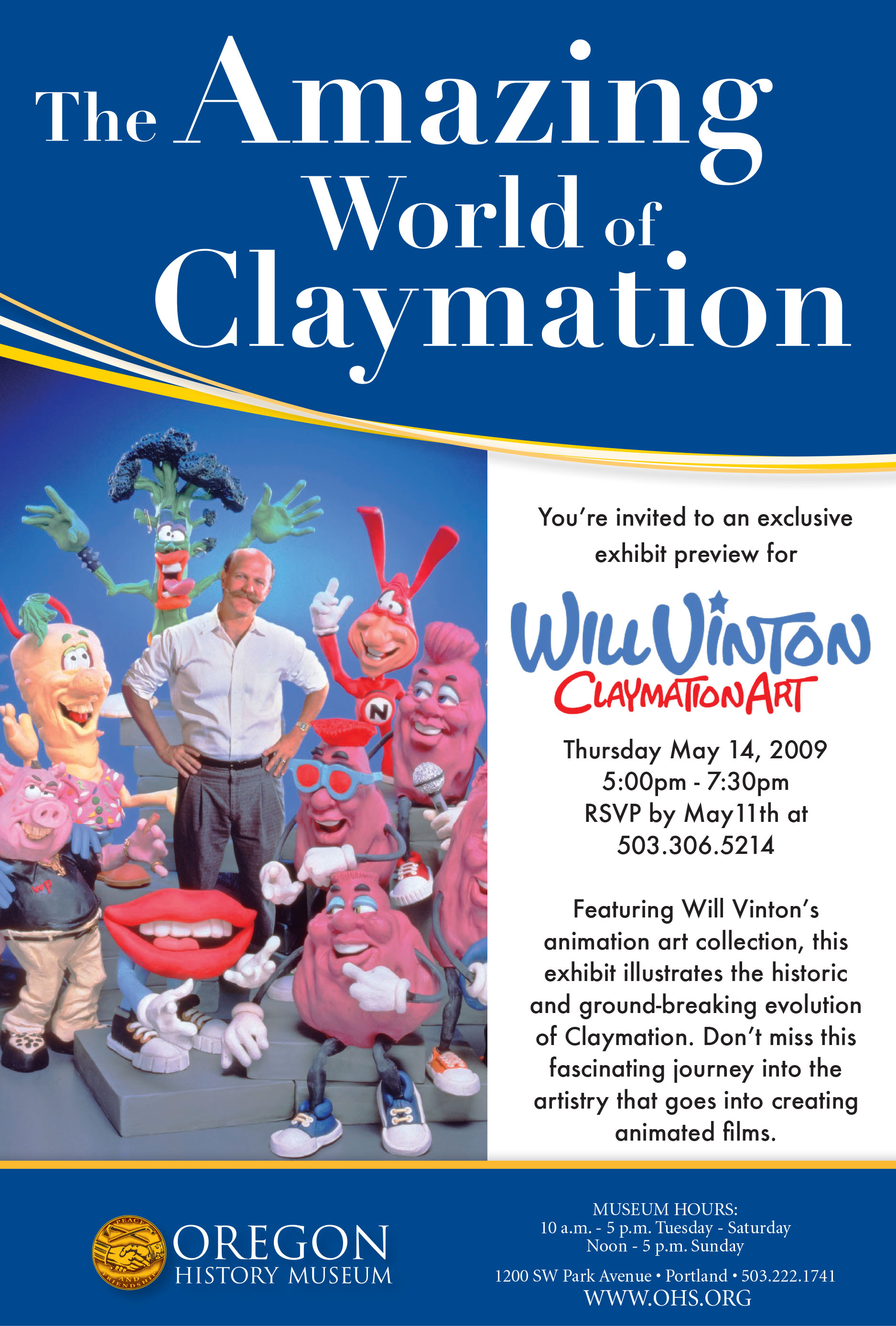Early Filmmaking in Oregon
Motion pictures debuted in Oregon in 1894 when a kinetoscope arrived in Portland. The innovative technology allowed boxing matches, vaudeville acts, and other popular entertainment to be shown in penny arcades and peepshows and, after 1906, on the nickelodeon.
Soon early films were being projected in theaters, first at Cordray’s Opera House in Portland. By 1897, local documentary films were being made, including Fishing on the Willamette (1897), The Portland Fire Department (1901), Decoration Day Parade (1902), Panoramic View of the Columbia (1904), and Opening Ceremonies of the Lewis & Clark Exposition Grounds (1905). In the 1920s, theater owners and print media developed Oregon newsreel content—including Screenland News, the Webfoot Weekly, and Oregonian Screen Review—which lasted throughout that decade.
One of the first feature films made in the state was The Fisherman’s Bride, a 1908 silent film produced by Col. William N. Selig’s Polyscope Company. Shot in Astoria at the mouth of the Columbia River, the film shows two men vying for a young woman’s hand. She chooses, but the unsuccessful suitor has his rival shanghaied. The Coast Guard rescues the groom-to-be and delivers him to the wedding. That same year Selig converted an old mansion in Los Angeles to a production studio—a movie factory—and kicked off the West Coast expansion of the film industry.
From 1908 to 1929, almost fifty full-length silent films were shot in Oregon. The combination of period buildings and diverse outdoor locations seems to have been attractive to early filmmakers, who quickly found their way around the state. Grace's Visit to the Rogue Valley, for example, was exhibited in 1915 to promote southern Oregon at the Panama-Pacific International Exposition in San Francisco. The film, which starred former Broadway actress Grace Fiero, included footage of Crater Lake, Payne’s Gulch, Medford, Ashland, and the Siskiyou Pass. Where Cowboy Is King, a documentary by the American Lifeograph Company in Portland, depicted the 1914 Pendleton Round-Up. The film included a simulated stagecoach robbery, an attack by Indians, and a much-criticized scene of horses injured in a long-distance race. Making films could be controversial.
Watching films—especially those dealing frankly with sex—could also be controversial. Responding to public concerns about the offerings at its dozens of movie theaters, the City of Portland established an advisory Censor Board in 1911 and a Board of Motion Picture Censors with enforcement power in 1914. Censors objected to such movies as Harry Shaw’s Dash for Liberty (1913), Sapho (1914), Traffic in Souls (1913), and The Valley of the Missing (1915), but approved the controversial The Birth of a Nation (1915) and Kreutzer Sonata (1915).
Movies were growing in popularity among the middle class, and censors aimed to protect the public from what some believed were immoral and unwholesome images and ideas. The economics of the industry—which was producing a million dollars of revenue in Portland, according to a 1915 Oregonian report—empowered theater owners to challenge and sometimes even ignore censors. Still, the Board of Motion Picture Censors continued to do its work until it was declared unconstitutional in 1961.
The economic potential of filmmaking was becoming evident throughout the state. In 1916, the Portland Chamber of Commerce tried to woo Hollywood filmmakers to Oregon by touting the state’s scenery, weather, and even its light. This economic impact was demonstrated in 1926, when Buster Keaton produced and starred in The General, which cost $750,000 to produce. Filmed in Cottage Grove using extras from the Oregon National Guard, The General is the story of a train engineer whose sweetheart and train (The General) are captured by Union forces. The hero stops the train by burning down a railroad bridge.
In the late 1920s, sound films—known as talkies—gave filmmakers new ways of storytelling and ushered in the Hollywood studio system that dominated filmmaking until midcentury. While more films were shot in Oregon in the 1920s than in the period from 1930 to 1960, the later decades saw such classics as Lost Horizon (1937), filmed in part on Mount Hood; Abe Lincoln in Illinois (1940), filmed on the McKenzie River and in Eugene; Canyon Passage (1945), set in Jacksonville; and Ring of Fire (1961), filmed in Vernonia. Some films could not be shot on a Hollywood sound stage.
Oregon in the Movies
Oregon also has been a setting for films. In September 1957, a grim-faced Mayor Terry Schrunk appeared on national television to warn Portlanders to evacuate before the arrival of Soviet bombers. The first-term mayor was playing himself in the CBS documentary A Day Called X, in which Portland stars as an average American city about to be destroyed by nuclear weapons. With the reassuring narration of actor Glenn Ford, the thirty-minute film shows Portlanders calmly leaving the city—too calmly, according to some critics.
Portland Exposé, a controversial noir film, appeared the same year—a modestly budgeted man-against-the-mob story ripped from the headlines of the Senate rackets investigations. It is the story of an honest tavern owner pressured into adding pinball machines to his bar. Before long, his nice little tavern has become a casino filled with prostitutes and gangsters. Some Portlanders were offended by the portrayal of police and union corruption, and several theaters canceled showings of the film, prompting producer Lindsley Parsons to ask for a U.S. Senate investigation.
Those two films mark a turning point of sorts in Oregon’s cinematic history with their different portrayals of the Rose City: overwhelmingly average or hopelessly corrupt. Most of the other films set in Oregon during the 1950s were Westerns, including Bend of the River (1952), The Indian Fighter (1956), and Oregon Passage (1957), in which Portland is portrayed as a corrupt frontier town. Other Westerns were filmed in Oregon but not set in the state, including The Great Sioux Uprising, Pillars of the Sky, and Tonka.
In 1960, the state seemed poised to lose out on a Western it very much coveted: The Story of Chief Joseph was going to be filmed in the State of Washington. Governor Mark O. Hatfield protested that it would be “almost sacrilegious” to film the story anywhere but Oregon and suggested that producers consult with actor Walter Brennan, who had a large working ranch in Joseph. The MGM film was never made, although a 1975 television movie about Chief Joseph, I Will Fight No More Forever, was eventually shot—in Mexico.
The 1960s counterculture was reflected in such films as Getting Straight (1970); Sometimes a Great Notion (from the novel by Ken Kesey), directed by and starring Paul Newman (1971); and One Flew over the Cuckoo’s Nest, starring Jack Nicholson (1975). Nicholson also directed Drive, He Said (1971), which was filmed at the University of Oregon.
Counterculture in Eugene took a different turn in 1978 with National Lampoon’s Animal House, set at fictional Faber College. Despite some trepidation by campus fraternities, administrators, and the Eugene Chamber of Commerce, the university hosted the low-budget, lowbrow classic. The University of Oregon itself was featured in two films about runner Steve Prefontaine, Without Limits (1998) and Prefontaine (1997). And a fictional Springfield appeared in the 2007 animated film The Simpsons Movie, co-written by cartoonist and Oregon native Matt Groening.
Growing Economic Impact
By the turn of the twenty-first century, the film industry in Oregon encompassed movie and television production, independent films and documentaries, commercials, animation, production facilities, talent agencies, and film festivals to create a multi-million-dollar sector of the state’s economy. Part of the growth of the industry is a result of the work of the Governor's Office of Film and Television, established in 1968 to encourage filmmakers and give them reasons to shoot in Oregon.
From 1980 to 2009, Oregon hosted over 250 feature films and television shoots, among them The Shining (1980), Personal Best (1982), The Goonies (1985), Free Willy (1993), Mr. Holland’s Opus (1995), The Postman (1997), Calvin Marshall(2009), Twilight (2008), and The River Why (2010). One notable disappointment was the attempt in 1993 to film The River Wild on the Rogue River with actress Meryl Streep in 1993. The environmental impact issues of shooting the movie on the river became so controversial that the filmmakers relocated many scenes to Montana.
Part of Oregon’s popularity with filmmakers lies in its locations, but another element has been the offer of a robust set of financial incentives, including partial rebates on Oregon-based goods and services and an additional cash payment of as much as 16.2 percent of wages paid. From 1987 to 2011, industry spending in Oregon tied to incentives was $852 million, an average of $34 million a year, and those numbers are growing. In 2009, incentives-related spending by film companies in Oregon was $61 million; in 2011, that spending more than doubled to $130 million. Employment associated with filmmaking in the state has been on the upswing as well, increasing by 30 percent from 2003 to 2008—from 3,069 to 4,225 workers. In addition, film and television production provides opportunities for production and post-production services companies located throughout the state, many of which also work in local television advertising.
Film Culture in Oregon
Serendipity has played a role in Oregon’s reputation for filmmaking in the person of Gus Van Sant, who attended high school in Portland. His low-budget Mala Noche (1985) caught the attention of Hollywood studios, which supported his later films Drugstore Cowboy (1989) and My Own Private Idaho (1991). All of the films were set in West Burnside and Old Town Portland. His later films Elephant (2003), Paranoid Park (2007), and Restless (2011) are set just outside Portland. Van Sant has managed to straddle independent filmmaking, with its distinct bleak, urban spirit, with traditional Hollywood projects such as Good Will Hunting and Finding Forrester.
The actors and filmmakers who have settled in Oregon include Kim Novak, Ginger Rogers, Bruce Campbell, Patrick Duffy, Denis Arndt, Tod Davies, Alex Cox, Jack Elam, and Sam Elliott. John Wayne was part owner of a historic ranch in Selma, near the Grants Pass location of Rooster Cogburn, and William Hurt owns a ranch in central Oregon.
Beyond the marquee names are the marquees themselves, from the Gem Theatre in Athena, to the Bagdad and Oriental Theatres in Portland, the Holly Theatre in Medford, the Egyptian Theatre in Coos Bay, and the Liberty Theatre in La Grande. Some were built specifically as “movie palaces” in exotic revival architectural styles, while others were converted from vaudeville and stage venues to movie theaters.
As movies became respectable entertainment in the 1920s, movie palaces thrived, opening shows with live entertainment and Wurlitzer organs, drawing customers in with movie shorts and newsreels, and even hosting song contests. During the 1930s, many theaters closed or cut back, but they flourished again in the 1940s when watching World War II newsreels became a weekly habit for many. In the 1950s, television was introduced in Oregon, and the rise of the car culture fueled the popularity of drive-in theaters. During the last quarter of the twentieth century, many theaters fell on hard times, closing or selling to national chains as movies competed with other forms of mass entertainment. Some historic theaters, like Astoria’s Liberty, have been renovated as community arts venues.
The Liberty Theatre is also home to the Astoria International Film Festival, launched in 2007. In 2010, Astoria celebrated its role in film history by establishing an Oregon Film Museum. The museum, which had 12,000 visitors in its first year, is in the old Clatsop County jail, a historic building used in three different movies—The Goonies (1985), Short Circuit (1986), and Come See the Paradise (1990).
The Astoria festival is just one of many Oregon film festivals. The oldest is the Northwest Filmmakers' Festival, established in 1973 and run by the Northwest Film Center at the Portland Art Museum. The center, which was started in 1971 and was incorporated into the Portland Art Museum in 1978, offers classes, runs the Best of the Northwest Film competition, and sponsors festivals, including the Portland International Film Festival (the state’s largest, with 40,000 attendees), the Reel Music Film Festival, the Portland Jewish Film Festival, and the Young People's Film Festival. From 1969 to 1981, the Northwest Film Center benefited from the energy and groundwork provided by the Center for the Moving Image at Portland State University. Other film festivals in the state include the Ashland Independent Film Festival (from 2001), the Bend Independent Film Festival (from 2006), the Salem Film Festival (from 2006), the Eugene International Film Festival (from 2007), and the Eastern Oregon Film Festival (from 2010).
Indies, Docs, and Animation
Independent films—those made outside the Hollywood studio system—are also part of Oregon’s film culture. Such films are often interested in specific issues, and some deal with topics related to the state’s history. Peter Richardson’s Clear Cut: The Story of Philomath and How to Die in Oregon, for example, are distinctly Oregon, as is Heather Lyn MacDonald’s Ballot Measure 9 (1995), which looks at a failed anti-gay ballot initiative. Other Oregon-made films have taken on national issues, such as Hot Coffee, by Susan Saladoff, a documentary on spilled coffee and tort reform.
In 2011, a record seven Oregon films were screened at the Sundance Film Festival in Park City, Utah, including four documentaries: Hot Coffee; How to Die in Oregon; We Were Here, by David Weissman; and If a Tree Falls, by Marshall Curry. There is also an unreleased documentary film, Sunshine Daydream, which was shot at the Grateful Dead's Veneta, Oregon, concert in 1972 to benefit the Springfield Creamery. The emcee: Ken Kesey.
Oregon Public Broadcasting (OPB) has created many documentary films, most notably The Oregon Experience, which has featured the stories of Governor Tom McCall, Opal Whiteley, Abigail Scott Duniway, The Rajneeshpuram, and The Modoc War, among others. Southern Oregon Public Television (SOPTV), established in 1977 to serve southern Oregon and northern California, has produced documentaries on Crater Lake, the Roseburg Blast, and the Applegate Trail.
Film-making has become means of documenting Oregon’s Native American culture, as well, and work produced by Oregon tribes includes the 1982 video The Earth is Our Home, which explores ancient Paiute traditions; the 2007 video Dark Waters—The Reservation Years; and the 2009 video Standing Strong, produced by the Indian nations of western Oregon as part of the state’s sesquicentennial.
Oregon has a number of successful animators. Some, like Oscar-winning Joan Gratz, have their own studios, while others, such as Joanna Priestly, Rose Bond, and Miles Inada, are associated with art and film schools. Still others work for studios, producing everything from talking M&M's to music videos to feature films. The early success of Will Vinton Studios in Portland was no doubt a catalyst and inspiration to film animation artists. Vinton, the creator of Claymation techniques and the winner of Emmy and Academy Awards, has produced and directed about fifty productions. At its peak in the 1990s, Will Vinton Studios had over $28 million in annual revenues and employed over four hundred people.
Nike’s Phil Knight, who invested in Will Vinton Studios in 1998, assumed a greater interest in the company as its finances declined. The company, renamed Laika, Inc., is now run by his son Travis Knight, a professional animator. Dedicated to both traditional stop-motion and computer-generated imagery, Laika created Coraline (2009), the first stop-motion film shot in 3-D, and ParaNorman (2012), the first stop-motion film to use a 3-D color printer to create character faces. Will Vinton has started a new company called Freewill Entertainment.
From The Fisherman’s Bride to ParaNorman, the Oregon film and video industry has been shouting "action" for over a hundred years. That century of filmmaking has portrayed many images of the state—its rivers, desert, mountains, architecture, people, and problems. Film has told the state’s stories, from Astoria to Ashland, from Portland to Pendleton, and from Cottage Grove to Bend.
-
![Broadway Theater, Portland, c.1940]()
Broadway Theater, Portland, c.1940.
Broadway Theater, Portland, c.1940 Courtesy Oreg. Hist. Soc. Research Lib., 0334A141
-
![Sill shoots a film at the Pendleton Round-Up, 1936]()
Jesse Sill, 1936, Pendleton.
Sill shoots a film at the Pendleton Round-Up, 1936 Courtesy Oreg. Hist. Soc. Research Lib., 018036
-
![Grosbeck showed some of the first films in Portland]()
Gene Grosbeck, 1955.
Grosbeck showed some of the first films in Portland Courtesy Oreg. Hist. Soc. Research Lib., 101823
-
![MGM vault, 1963 NW Kearney, Portland, 1944]()
MGM vault, Portland, 1944.
MGM vault, 1963 NW Kearney, Portland, 1944 Courtesy Oreg. Hist. Soc. Research Lib., Les Ordeman, 0334A157
-
![]()
Kirk Douglas, "Indian Fighter," Bend, 1955.
Courtesy Oreg. Hist. Soc. Research Lib., 022594
-
![Buster Keaton's "The General, 1926, Lane County]()
"The General" filmed in Cow Creek, 1926.
Buster Keaton's "The General, 1926, Lane County Courtesy Oreg. Hist. Soc. Research Lib., 024191
-
![City Auditor Will Gibson swears in Censorship Board, 1926]()
Portland Censorship Board, 1942.
City Auditor Will Gibson swears in Censorship Board, 1926 Courtesy Oreg. Hist. Soc. Research Lib., 022551
-
![Chief Thunder Elk, Umatilla, in "Pillars of the Sky," 1956, La Grande]()
Chief Thunder Elk in "Pillars of the Sky," 1956.
Chief Thunder Elk, Umatilla, in "Pillars of the Sky," 1956, La Grande Courtesy Oreg. Hist. Soc. Research Lib., 015114
Related Entries
-
Andries Deinum (1918-1995)
Film educator Andries Deinum transformed Portland’s cultural and intell…
-
![Animal House (film)]()
Animal House (film)
National Lampoon’s Animal House, one of the most successful American fi…
-
Ashland Independent Film Festival
The Ashland Independent Film Festival (AIFF) is a five-day film festiva…
-
![Bagdad Theater]()
Bagdad Theater
From its grand opening on January 14, 1927, as movie theater and “Oasis…
-
![Chris Eyre (1968-)]()
Chris Eyre (1968-)
Chris Eyre, the nation's most celebrated American Indian film director,…
-
![City Girl (film)]()
City Girl (film)
In the summer of 1928, German Expressionist filmmaker F. W. Murnau rent…
-
![Clark Gable in Oregon]()
Clark Gable in Oregon
William Clark Gable’s path to Hollywood began shortly after he stepped …
-
![Craterian Ginger Rogers Theater at the Collier Center]()
Craterian Ginger Rogers Theater at the Collier Center
When fourteen-year-old Virginia Katherine McMath, better known as Ginge…
-
![Egyptian Theatre]()
Egyptian Theatre
The Egyptian is a vaudeville-era theater located at 229 South Broadway …
-
![Emperor of the North (film)]()
Emperor of the North (film)
Forty-six years after a Hollywood production company spent the summer i…
-
![Gus Van Sant (1952-)]()
Gus Van Sant (1952-)
Gus Van Sant, Oregon’s most celebrated filmmaker, has lived and worked …
-
![Hollywood Theatre]()
Hollywood Theatre
On July 17, 1926, Claude C. Jensen and John G. von Herberg, owners of a…
-
![James Ivory (1928-)]()
James Ivory (1928-)
James Ivory, who received three Academy Award nominations for best dire…
-
![Jane Powell (1929–2021)]()
Jane Powell (1929–2021)
Portland native Jane Powell was an actress, singer, and dancer in Metro…
-
![Kim Novak (1933-)]()
Kim Novak (1933-)
In the late 1950s and early 1960s, Kim Novak was one of Hollywood’s top…
-
![One Flew Over The Cuckoo's Nest (film)]()
One Flew Over The Cuckoo's Nest (film)
One Flew Over the Cuckoo’s Nest, a film based on the 1962 book by Orego…
-
![Paint Your Wagon (film)]()
Paint Your Wagon (film)
A movie often considered to be one of the greatest Hollywood flops of a…
-
![Portland Civil Defense]()
Portland Civil Defense
In response to perceived Cold War threats, on February 20, 1950, Mayor …
-
![Stand By Me (film)]()
Stand By Me (film)
Stand By Me, a classic of 1980s American cinema, was filmed mostly in a…
-
![The General (film)]()
The General (film)
Buster Keaton's masterpiece and one of the greatest silent movies of al…
-
![The Goonies (Film)]()
The Goonies (Film)
For four weeks in the fall of 1984, the Uppertown neighborhood of Astor…
-
![The Way West (film)]()
The Way West (film)
The Way West, a big-budget western film that was universally panned by …
-
![William Gale "Will" Vinton (1947–2018)]()
William Gale "Will" Vinton (1947–2018)
Will Vinton, the first person born in Oregon to win an Academy Award, r…
Further Reading
Erickson, Mary. "‘In the Interest of the Moral Life of Our City’: The Beginning of Motion Picture Censorship in Portland, Oregon." Film History 22:2 (2010): 148-69.
Labosier, James. “From the Kinetoscope to the Nickelodeon: Motion Picture Presentation and Production in Portland, Oregon, from 1894 to 1906.” Film History 16:3 (2004): 286-323.
Oregon Film Museum. www.oregonfilmmuseum.com.
Thomas, Ellen S. “‘Scooping the Local Field’: Oregon's Newsreel Industry, 1911-1933," Oregon Historical Quarterly (Fall 1989): 229-304.

